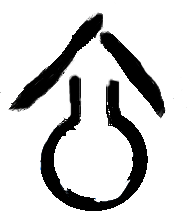Yin and Yang
The theory of yin and yang is fundamental to Oriental medicine. It is a deceptively simple concept, but can be remarkably profound. The basic theory is fairly well embedded in the West and many people would probably recognise the Yin/Yang symbol, associating yin with the feminine and yang with the masculine.
Yin and yang describes relationships between phenomena or things. For example, identifying something as hot implies that we can compare it to something cold.
There are four basic principles that govern the relationship of yin and yang:
1. Yin and yang oppose each other
Yin and yang are opposite ends of a spectrum, like night and day for example. However, they are only opposite relative to each other — night is only yin in comparison to day. Furthermore, yin and yang are infinitely divisible. For example, while the day is yang compared to the night, the day can be further divided into yin and yang — so 8 am can be considered yang in comparison to 7 am.
2. Yin and yang are interdependent
Yin and yang cannot exist without each other — yin can only exist because yang exists, and yang can only exist because yin exists. For example, we cannot understand what night is unless we understand what day is, and vice versa.
3. Yin and yang support each other
Yin and yang within any phenomenon are in a state of constant flux. Yin and yang interact with each other, by using each other up, but also by supporting each other. As yin increases, so yang decreases — as night approaches, day disappears.
4. Yin and yang transform into each other
Given the correct set of circumstances, yin transforms into yang and yang transforms into yin. Night becomes day becomes night.
Kyo and jitsu - the yin and yang of shiatsu

In shiatsu, yin and yang are central to the treatment. However, we use a specialised form of yin and yang called kyo and jitsu in Japanese. Kyo and jitsu can be roughly translated as empty and full. Jitsu is easy to describe in the West — think of a tight muscle like a knot in your shoulder. This is jitsu — full or blocked or stuck. Kyo is more difficult to describe, but refers to the parts of the body where there seems to be something "lacking" energetically. Points on the body that are kyo invite touch. Applying pressure to the kyo parts of our bodies often gives us a feeling of great support. Shiatsu aims to balance the kyo and jitsu in the body by moving the "stuck" energy from the jitsu and coaxing it into the empty or kyo.